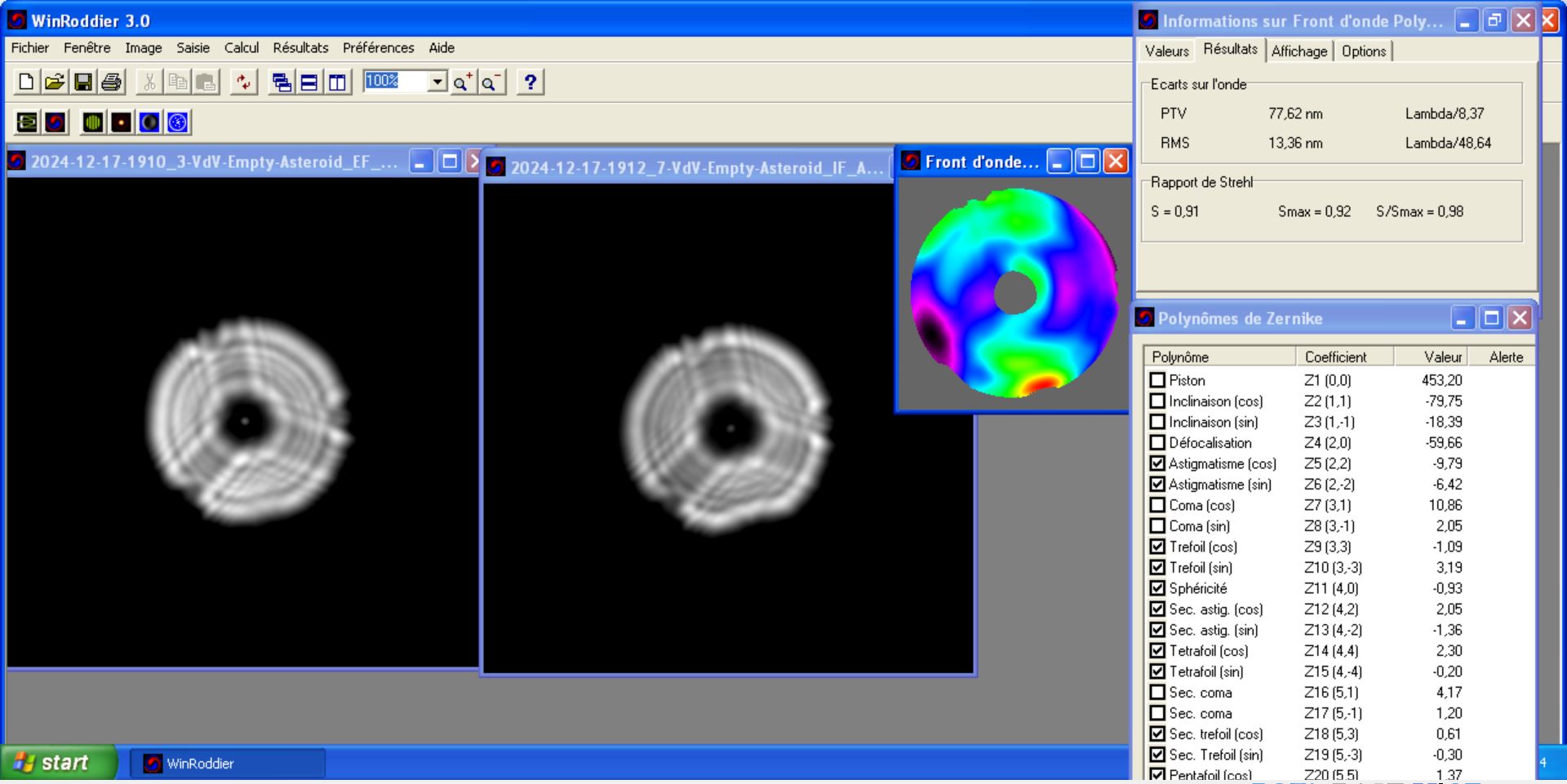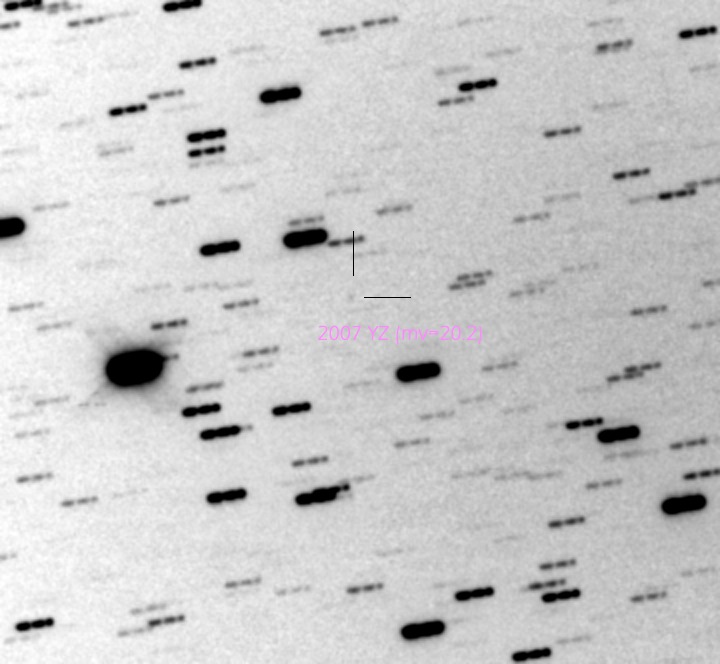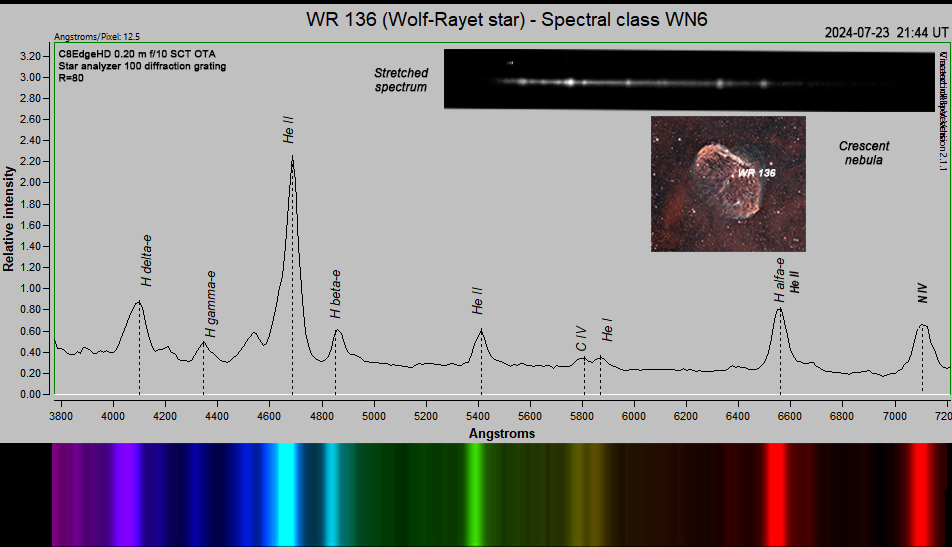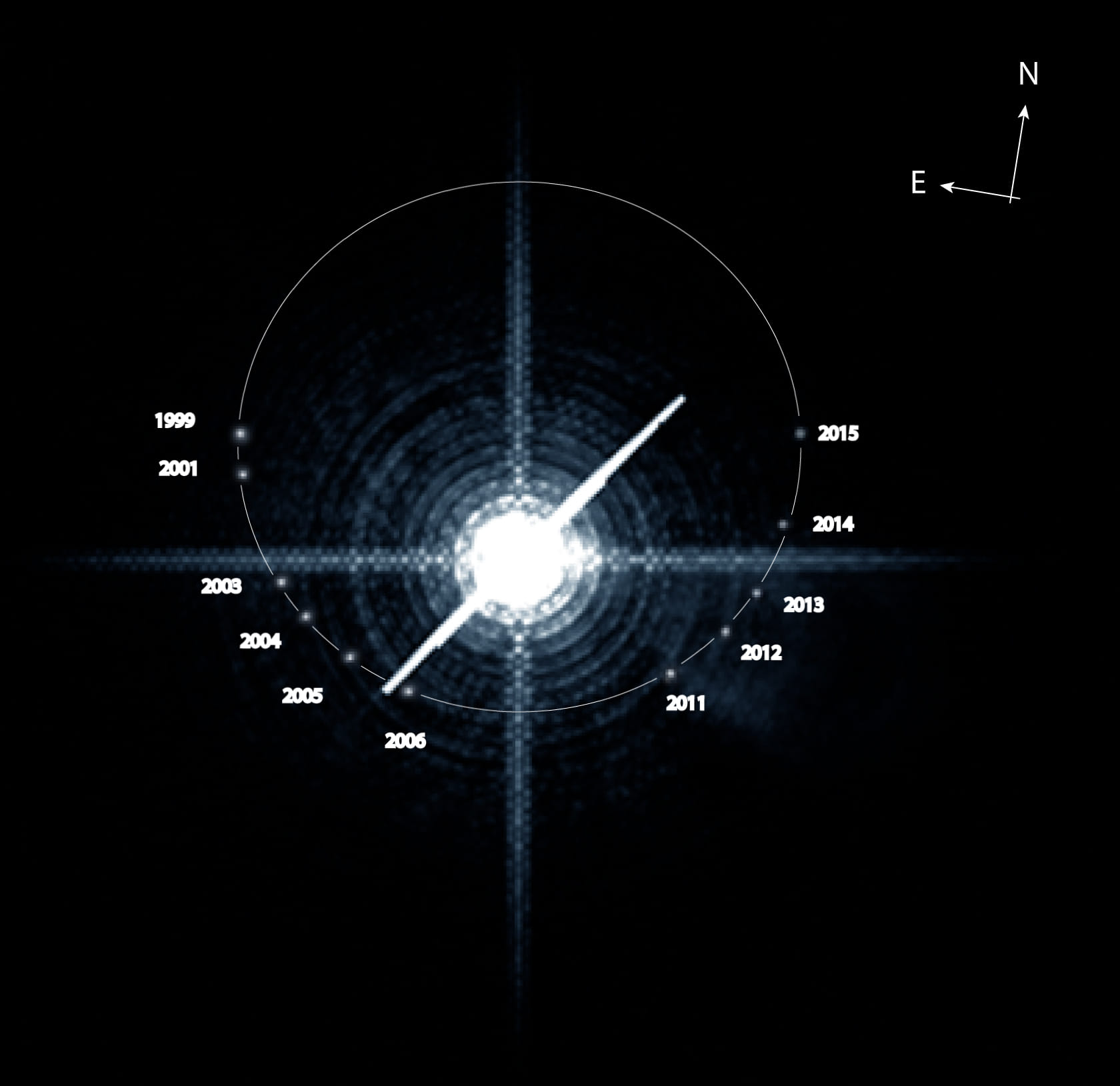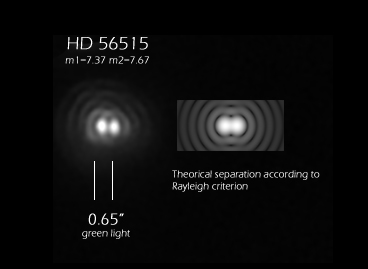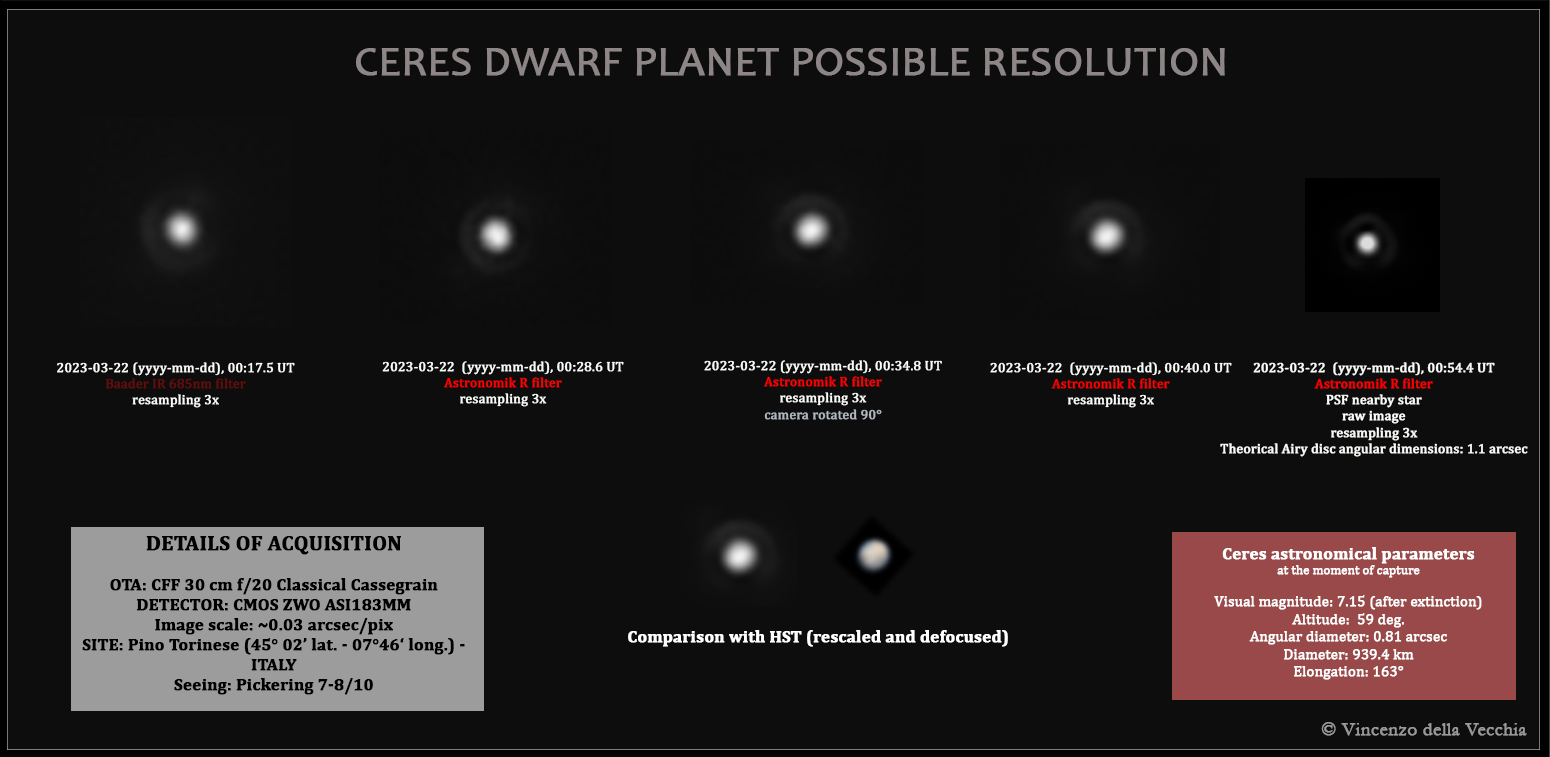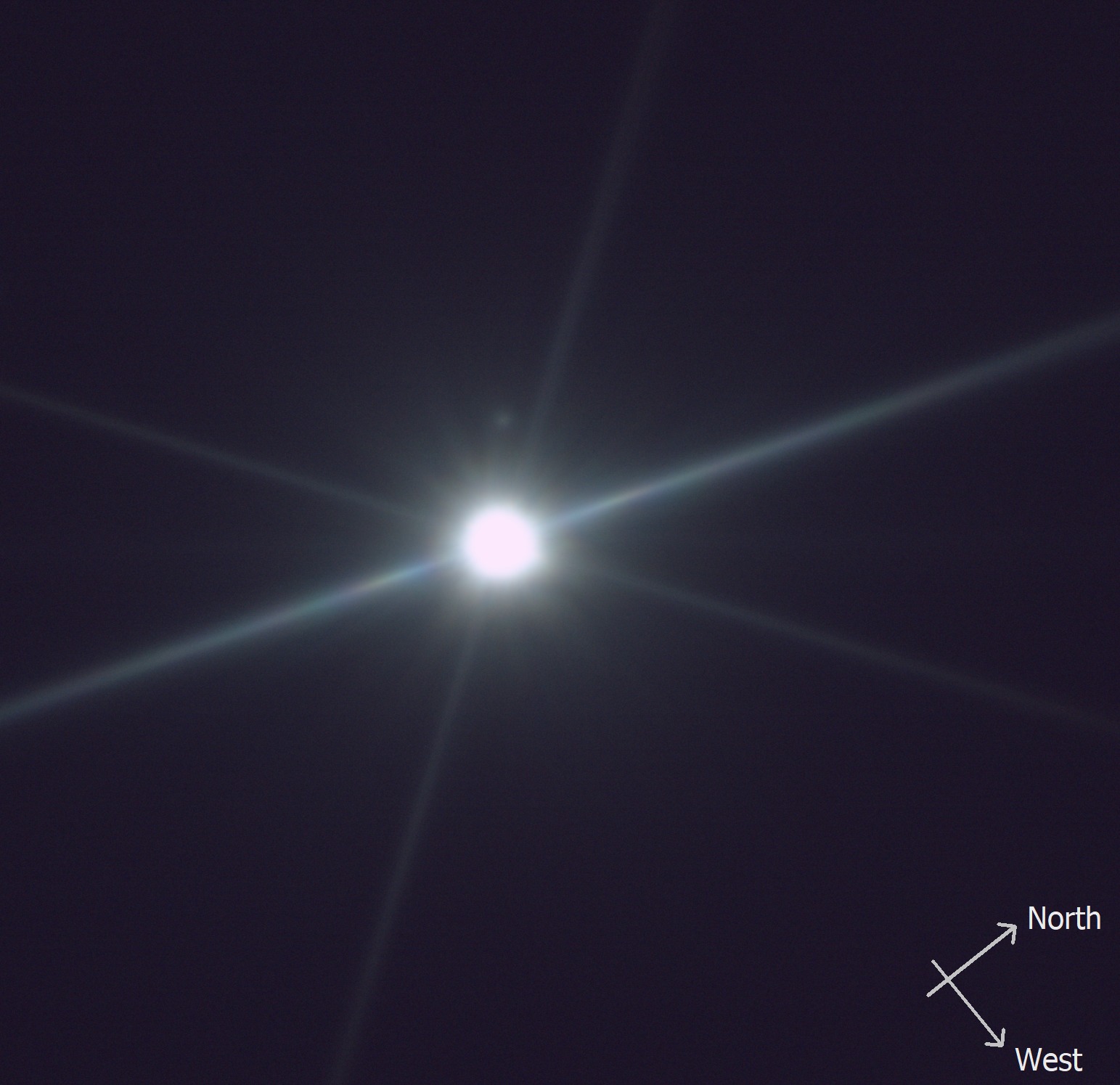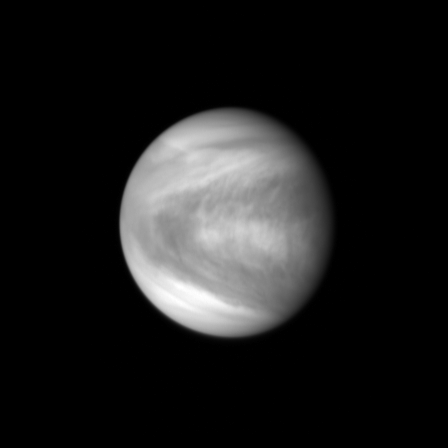Zambuto 10″ f/5 textbook star test +roddier test
Star test of my Zambuto 10″ f/5 mirror, mounted on the Sumerian Alkaid Dobsonian (completely manual). The star chosen for the test was Polaris. The two intra- and extrafocal figures are pretty much identical, justifying the worldwide reputation of Carl Zambuto.
The three primary-holding clips and the intrusion of the focuser into the cone of light are visible on the edge (11-17 o'clock).
The Roddier test gives a Strehl ratio of 0.98 on the focal plane and a correction of 1/50 wave RMS. The coma was removed to account for slight miscollimations, quite difficult to get rid of on this telescope.
Technical data
ASI174MM ♦ Baader 685 nm filter
December 17, 2024
mag. 20 NEA 2007 YZ
With the aid of "Track & Stack" technique of about 30' of data I managed to image this Near-Earth asteroid (provisional name 2007 YZ) of magnitude 20.2 from my suburban observatory. The night was particularly clear and moonless, and the asteroid was quite high on my horizon (45°).
Technical data
RC GSO 10″ f/5,6 ♦ Ares-M cooled camera
November 11, 2024
Wolf-Rayet 136 spectrum
At the center of the famous Crescent Nebula in Cygnus, the Wolf-Rayet 136 looms large, whose spectrum I recorded with the C8, the ASI462MM and the Star Analyzer 100.
After an accurate and not quite easy stacking of 100 frames I achieved a good S/N ratio, as can be seen from the cleanliness of the monochromatic spectrum above, which clearly shows the bright emission lines. In particular, the two yellow lines of C IV and He I are close but very distinct.
I used the latter couple of lines to estimate the resolution of the spectrum, equal to 45 Å.
Technical data
C8EdgeHD ♦ Star Analyzer 100 ♦ Apollo-M camera
Dispersion=6.2 Å/pixel
July 23, 2024
PROCYON B ORBIT (HST DATA)
Collecting some 1 GB of Hubble Space Telescope data, spanning more than 15 years, I was able to draw the orbit of Procyon B around the main star.
Due to huge magnitude difference, the double is one of the toughest to observe from the ground, so researchers were forced to request HST time to study the astrometry of the system (see Bond et al.). They say it was impossible to avoid saturating the CCD with the new WFC3 detector, so you can see the blooming in all the FITS.
The ellipse I obtained fits quite well with the white dwarf apparent orbit presented in the paper. Procyon B completes one revolution in around 40 years.
HD 56515 split at Rayleigh limit
The double HD 56515 in Canis Minor, clearly resolved at just under 0.7″ of separation, compared with a theorical image of the Rayleigh limit (equal to approximately 0.69″ for C8 at green wavelengths). In addition to the usual checks on the position angle, I also carried out a plate solving on the star field to make sure I imaged the right star.
Technical data
C8EdgeHD ♦ ZWO ASI462MM ♦ Astronomik G
March 19, 2024
Ceres resolution
An attempt to resolve Ceres (the largest of the asteroids), in opposition those days. The third and fourth images were obtained with the camera rotated 90°; you can clearly see how the axis of the asteroid (which is cigar-shaped) rotates in accordance. For comparison, the last image shows the PSF of a nearby star. The image obtained (rescaled and blurred) matches almost perfectly with the Hubble image.
This image is one of the very few (among amateur ones) to clearly resolve this asteroid.
Sirius A/B
The white dwarf Sirius B (aka "The Pup") is in recent years at the maximum distance from the main star (more than 11″), so it is not difficult to spot in the glare of the primary, both visually and digitally. The optics must be very clean and the seeing conditions fair, at least. The diagonal reflection in the image is given by the ADC prisms, with the 4 secondary diffraction spikes superimposed. The processing is light, to give an idea of how the double looks like at the eyepiece.
Technical data
14″ Newton (Zen optics) ♦ Player One Saturn-C camera
October 17, 2022
Venus clouds animation
imaged by akatsuki probe
This animation had been assembled with images taken by the Japanese Akatsuki probe (Planet-C) in orbit around Venus. The instrument used was UVI (UltraViolet Imager), while the sequence spans approximately 6 1/2 days.
The size of the planet changes according to the distance of the probe. The famous Venusian Y is recognizable at the beginning and towards the end of the sequence.
South at top.
2016 June 22-28

